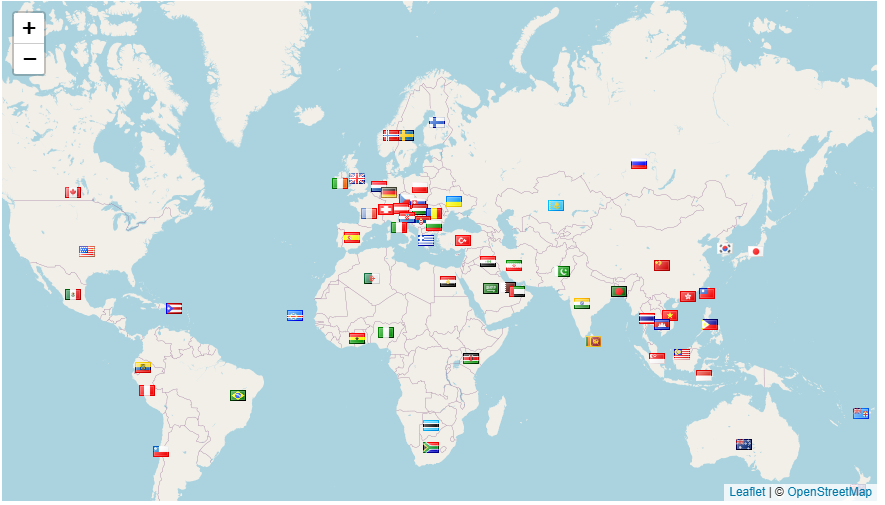Stability Analysis of Retaining Soil Walls Protecting Banu Canal, Ngantru Village, Ngantang District, Malang-Indonesia
DOI:
https://doi.org/10.70822/journalofevrmata.vi.37Keywords:
Retaining wall, stability analysis, Gravity Wall, Cantilever WallAbstract
The frequent occurrence of landslides in the Ngantang District, Malang Regency, especially in Ngantru Village, is caused by topographic conditions, where the area is hilly because it is located at the foot of Mount Kelud. Likewise, along the Banu Irrigation Area Channel there are points prone to landslides, especially in the upstream part. These landslides result in the channel breaking so that the irrigation water supply is disrupted. DPT (Soil Retaining Wall) is a building structure whose role is to maintain the stability of the soil on sloping land. The existence of this wall is expected to be able to prevent the soil from moving or landslides. Therefore, to protect the Banu Irrigation Area Channel, a DPT construction was built where the DPT details used were stone masonry construction or the Gravity Wall type. With a total height of 3.9 m, the bottom sole width is 1.00 m and the upper sole width is 0.50 m. The purpose of this paper is to analyze whether the existing DPT is safe against the forces that work, especially analyzing its stability, then comparing it with other DPT designs with the Cantilever Wall type. Based on the analysis of calculations for the Existing Gravity Type Earth Retaining Wall, the stability figures for soil bearing capacity σ max= 23.76 > 15.012 (safe ), stability against sliding hazards Fgs=3.321 ≥ 1.5 (safe ), and stability against sliding hazards Fgs=3.321 ≥ 1.5 (safe ) are obtained. = 6.26 > 1.5 (safe ) while for cost calculations the value obtained is IDR 180,390,000.00 (One Hundred and Eighty Million Three Hundred and Ninety Thousand Rupiah). Meanwhile, for the analysis of the comparative soil retaining wall for the cantilever type, the stability figures for soil bearing capacity σ max= 25.92 > 15.012 (safe), stability against sliding hazards Fgs=3.55 ≥ 1.5 (safe ), and stability against overturning hazards were obtained. SF= 6.64 > 1.5 (safe ).
References
S. Gashure and D. Wana, “Sustainability of the long-term indigenous soil and water conservation practices in the UNESCO designated cultural landscapes of Konso, Ethiopia,” Curr. Res. Environ. Sustain., vol. 5, no. April, p. 100221, 2023, doi: 10.1016/j.crsust.2023.100221.
E. Luedeling, M. Nagieb, F. Wichern, M. Brandt, M. Deurer, and A. Buerkert, “Drainage, salt leaching and physico-chemical properties of irrigated man-made terrace soils in a mountain oasis of northern Oman,” Geoderma, vol. 125, no. 3–4, pp. 273–285, 2005, doi: 10.1016/j.geoderma.2004.09.003.
Y. Zhang et al., “Arbuscular mycorrhizal fungi alleviate the heavy metal toxicity on sunflower (Helianthus annuus L.) plants cultivated on a heavily contaminated field soil at a WEEE-recycling site,” Sci. Total Environ., vol. 628–629, pp. 282–290, 2018, doi: 10.1016/j.scitotenv.2018.01.331.
K. Furtak and A. Wolińska, “The impact of extreme weather events as a consequence of climate change on the soil moisture and on the quality of the soil environment and agriculture – A review,” Catena, vol. 231, no. July, 2023, doi: 10.1016/j.catena.2023.107378.
L. Bai et al., “Soil erosion and sediment interception by check dams in a watershed for an extreme rainstorm on the Loess Plateau, China,” Int. J. Sediment Res., vol. 35, no. 4, pp. 408–416, 2020, doi: 10.1016/j.ijsrc.2020.03.005.
L. V. C. Bonaparte, A. T. P. Neto, L. G. S. Vasconcelos, R. P. Brito, and J. J. N. Alves, “Remediation procedure used for contaminated soil and underground water: A case study from the chemical industry,” Process Saf. Environ. Prot., vol. 88, no. 5, pp. 372–379, 2010, doi: 10.1016/j.psep.2010.05.004.
M. Heibaum, “Geosynthetics for waterways and flood protection structures - Controlling the interaction of water and soil,” Geotext. Geomembranes, vol. 42, no. 4, pp. 374–393, 2014, doi: 10.1016/j.geotexmem.2014.06.003.
O. Serrano, M. A. Mateo, P. Renom, and R. Julià, “Characterization of soils beneath a Posidonia oceanica meadow,” Geoderma, vol. 185–186, pp. 26–36, 2012, doi: 10.1016/j.geoderma.2012.03.020.
X. Y. Tang et al., “Biochar reduces antibiotic transport by altering soil hydrology and enhancing antibiotic sorption,” J. Hazard. Mater., vol. 472, no. May, p. 134468, 2024, doi: 10.1016/j.jhazmat.2024.134468.
G. Scalzini et al., “Cell wall polysaccharides, phenolic extractability and mechanical properties of Aleatico winegrapes dehydrated under sun or in controlled conditions,” Food Hydrocoll., vol. 149, no. November 2023, 2024, doi: 10.1016/j.foodhyd.2023.109605.
B. Łotocka and K. Bączek, “Anatomy of vegetative organs of Eleutherococcus senticosus (Rupr. & Maxim.) Maxim. (Araliaceae),” Flora Morphol. Distrib. Funct. Ecol. Plants, vol. 314, no. March, 2024, doi: 10.1016/j.flora.2024.152470.
Y. Javeed, Y. Goh, K. H. Mo, S. P. Yap, and B. F. Leo, “Microbial self-healing in concrete: A comprehensive exploration of bacterial viability, implementation techniques, and mechanical properties,” J. Mater. Res. Technol., vol. 29, no. February, pp. 2376–2395, 2024, doi: 10.1016/j.jmrt.2024.01.261.
C. Ferronato, M. Speranza, L. Ferroni, A. Buscaroli, G. Vianello, and L. Vittori Antisari, “Vegetation response to soil salinity and waterlogging in three saltmarsh hydrosequences through macronutrients distribution,” Estuar. Coast. Shelf Sci., vol. 200, pp. 131–140, 2018, doi: 10.1016/j.ecss.2017.10.019.
M. Riaz et al., “Variations in morphological and physiological traits of wheat regulated by chromium species in long-term tannery effluent irrigated soils,” Chemosphere, vol. 222, pp. 891–903, 2019, doi: 10.1016/j.chemosphere.2019.01.170.
L. Chen, J. rong Liu, W. fang Hu, J. Gao, and J. yan Yang, “Vanadium in soil-plant system: Source, fate, toxicity, and bioremediation,” J. Hazard. Mater., vol. 405, no. October 2020, p. 124200, 2021, doi: 10.1016/j.jhazmat.2020.124200.
S. Verma, V. S. Khanduri, and A. Mittal, “Stabilization of colluvial soil using rice husk ash and micro silica powder,” Mater. Today Proc., vol. 32, pp. 819–823, 2020, doi: 10.1016/j.matpr.2020.04.019.
M. U. Hassan et al., “Silicon a key player to mitigate chromium toxicity in plants: Mechanisms and future prospective,” Plant Physiol. Biochem., vol. 208, no. March, p. 108529, 2024, doi: 10.1016/j.plaphy.2024.108529.
T. Heng, X. L. He, L. L. Yang, X. Xu, and Y. Feng, “Mechanism of Saline–Alkali land improvement using subsurface pipe and vertical well drainage measures and its response to agricultural soil ecosystem,” Environ. Pollut., vol. 293, no. November 2021, p. 118583, 2022, doi: 10.1016/j.envpol.2021.118583.
N. Mizal-Azzmi, N. Mohd-Noor, and N. Jamaludin, “Geotechnical approaches for slope stabilization in residential area,” Procedia Eng., vol. 20, pp. 474–482, 2011, doi: 10.1016/j.proeng.2011.11.190.
D. C. W. Sanderson, P. Bishop, M. Stark, S. Alexander, and D. Penny, “Luminescence dating of canal sediments from Angkor Borei, Mekong Delta, Southern Cambodia,” Quat. Geochronol., vol. 2, no. 1–4, pp. 322–329, 2007, doi: 10.1016/j.quageo.2006.05.032.
A. Niu and C. Lin, “Managing soils of environmental significance: A critical review,” J. Hazard. Mater., vol. 417, no. January, p. 125990, 2021, doi: 10.1016/j.jhazmat.2021.125990.
W. Hartley, N. M. Dickinson, P. Riby, and B. Shutes, “Sustainable ecological restoration of brownfield sites through engineering or managed natural attenuation? A case study from Northwest England,” Ecol. Eng., vol. 40, pp. 70–79, 2012, doi: 10.1016/j.ecoleng.2011.12.020.
Y. Yasui, S. Nishida, T. Shironomae, M. Satomi, T. Kuwahara, and M. Kohno, “Surgical approach for fecal incontinence with a patulous anus after transanal pull-through for Hirschsprung disease,” J. Pediatr. Surg., vol. 52, no. 6, pp. 1070–1075, 2017, doi: 10.1016/j.jpedsurg.2017.02.004.
J. Gao, H. Han, C. Gao, Y. Wang, B. Dong, and Z. Xu, “Organic amendments for in situ immobilization of heavy metals in soil: A review,” Chemosphere, vol. 335, no. April, p. 139088, 2023, doi: 10.1016/j.chemosphere.2023.139088.
P. Ruggeri, V. M. E. Fruzzetti, and G. Scarpelli, “Renovation of quay walls to meet more demanding requirements: Italian experiences,” Coast. Eng., vol. 147, no. October 2018, pp. 25–33, 2019, doi: 10.1016/j.coastaleng.2019.01.003.
R. Yadav et al., “Heavy metal toxicity in earthworms and its environmental implications: A review,” Environ. Adv., vol. 12, no. April, p. 100374, 2023, doi: 10.1016/j.envadv.2023.100374.
M. Sawada and M. Mimura, “Geotechnical approaches for preservation of openly exhibited Geo-relics damaged by rainfall infiltration,” Soils Found., vol. 62, no. 1, p. 101097, 2022, doi: 10.1016/j.sandf.2021.101097.
M. G. F. Esperança Júnior, D. M. da Conceição, and R. Iannuzzi, “Influence of the abiotic environment on Permian woods from northwestern Gondwana,” Rev. Palaeobot. Palynol., vol. 316, no. July, 2023, doi: 10.1016/j.revpalbo.2023.104947.
J. Elam and C. G. Björdal, “Degradation of wood buried in soils exposed to artificially lowered groundwater levels in a laboratory setting,” Int. Biodeterior. Biodegrad., vol. 176, no. June 2022, 2023, doi: 10.1016/j.ibiod.2022.105522.
E. E. Alonso, M. Sondon, and M. Alvarado, “Landslides and hydraulic structures,” Eng. Geol., vol. 292, no. June, p. 106264, 2021, doi: 10.1016/j.enggeo.2021.106264.
T. Atkins, “Burrowing in Soils, Digging and Ploughing,” Sci. Eng. Cut., pp. 327–351, 2009, doi: 10.1016/b978-0-7506-8531-3.00014-6.
Downloads
Published
Issue
Section
License
Copyright (c) 2024 suhudi suhudi, Fifi Damayanti

This work is licensed under a Creative Commons Attribution 4.0 International License.







